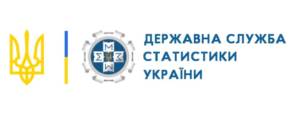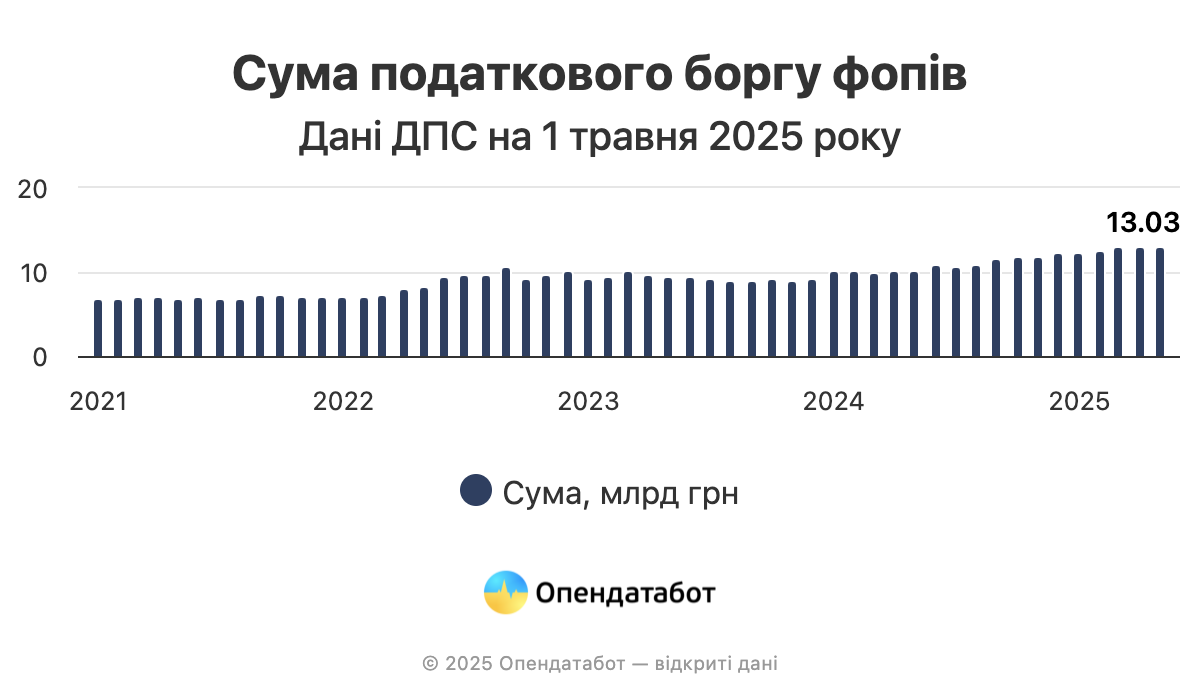
Ukraine’s negative foreign trade balance in goods in January-April 2025 increased by 48.5% compared to the same period in 2024, reaching $11.512 billion from $7.755 billion, according to the State Statistics Service (Gosstat).
According to its data, exports of goods from Ukraine during the specified period compared to January-April 2024 decreased by 6.9% to $13.312 billion, while imports increased by 12.6% to $24.824 billion.
The statistics agency specified that in April 2025, compared to March 2025, seasonally adjusted exports decreased by 4.4% to $3.369 billion, and imports decreased by 2.3% to $6.529 billion.
The seasonally adjusted foreign trade balance in April 2025 was negative at $3.161 billion, as it was in the previous month at $3.163 billion.
The export-to-import coverage ratio in January-February 2025 was 0.54 (in January-April 2024, it was 0.65).
The State Statistics Service reported that foreign trade operations were conducted with partners from 217 countries around the world.
Earlier, the Experts Club information and analytical center released a video analysis of the Ukrainian and global economies, more details here –
https://youtu.be/LT0sE3ymMnQ?si=0Cstf1AY9xZ4Dxxx

Men are increasingly seeking official recognition through the courts of their sole responsibility for raising a minor child. At least 1,255 such cases have been found in the court registry search engine since the start of the full-scale. In over three years, the number of such cases has increased 67 times. This year, courts have already considered 400 cases concerning the independent upbringing of a minor child by a father.
The number of court cases establishing the fact of single parenting and care for a minor child by a father has increased 67 times since the start of the full-scale war, according to the Babusya court registry search engine. Let’s compare: only six such cases were recorded from January to May 2022, but by the same period in 2025, their number had increased to 400.
In total, at least 1,255 court cases involving men who decided to officially establish the fact of independent upbringing of a minor child have been found in the court register since the start of the full-scale war.
The number of cases is growing every year. In 2022, there were only 37 such cases. Within a year, their number increased fivefold to 180. The number of appeals from men to the courts to be recognized as single parents reached 625 cases in 2024.
This year, courts in Ukraine have already considered at least 400 similar cases. This is 3.1 times more than in the same period in 2024.
It should be noted that the status of a father raising a child alone allows him to travel abroad, which is currently restricted for men between the ages of 18 and 60.
Asters partner Talina Kravtsova notes that over the past few years, there has been an increase in the number of requests for recognition of men as single fathers. This can be explained by mothers leaving the country, as well as the state of war and mobilization. At the same time, the term “single father” is not defined in legislation and is often equated in court practice with the status of “single mother.” Therefore, if we consider the characteristics of single mother status (which were defined back in 1992 by a resolution of the Plenum of the Supreme Court of Ukraine), a father is recognized as “single” if he:
1) is not married;
2) is raising and supporting a child on his own without the mother’s participation.
If the mother has died, is recognized as missing, or has refused to take the child from the maternity hospital, the father is obliged to take the child and acquires the status of a single father. If the mother is alive but does not participate in the child’s life, the status of a single father can also be acquired, although this will be more difficult.
“There is a myth that it is enough to obtain a court decision dissolving the marriage between the parents or determining the child’s place of residence with the father. In fact, this is not the case. In such situations, it is necessary to confirm/establish in court that the father is raising and supporting the child on his own. At the same time, the status of a “single parent” in Ukraine provides important social benefits and guarantees: additional paid leave, monthly state assistance, increased tax social benefits, deferral of mobilization, advantages in obtaining housing, places in kindergartens, etc.,” comments Talina Kravtsova.
The lawyer notes that due to attempts to abuse this mechanism to obtain deferrals, courts and other state bodies are more careful with such cases during martial law, which could potentially complicate access to the status for those who are actually entitled to it.
https://opendatabot.ua/analytics/solo-fathers


The All-Ukrainian Bakers’ Association (VAP) and the Union of Millers of Ukraine In 2024, for the second year in a row, they refused to sign a memorandum with the Ministry of Agrarian Policy and Food and grain associations due to disregard for the interests and arguments of processors, said VAP head Alexander Taranenko in an interview with Interfax-Ukraine.
“A memorandum is a document for which no one bears legal responsibility for violating. In addition, the VAP and the Ukrainian Millers’ Union opposed the volumes specified in the memorandum (a limit on grain exports of 16.2 million tons), as this leads to the export of very large volumes of food grain from Ukraine, which significantly affects domestic bread prices,” he explained.
Taranenko emphasized that processing enterprises insist on distinguishing between food and feed grain when fixing grain export volumes. At the same time, they have nothing against the export of feed grain in any quantity, since Ukraine grows more than enough of it.
Speaking about food grain, the expert noted that in recent years, as a result of various events – climate change, military actions and economic situations – the quality of the grain harvest in Ukraine has significantly deteriorated.
“While in 2020, food wheat accounted for 57% of the harvest, in 2024 it will account for only 27%. Accordingly, the volume of grain suitable for processing is even smaller, because the aforementioned 57% and 27% include wheat of the first, second, and third grades. Not all third-grade wheat is suitable for processing into flour. This means that less than 20% of the total harvest in 2024 was suitable for processing into flour,” Taranenko stated.
According to him, these nuances are completely ignored by grain experts. At the beginning of the harvest, the first wave of exports to foreign markets includes a large amount of food wheat, which causes an increase in domestic bread prices.
If the authorities had taken certain measures, such as introducing export segmentation, forming domestic reserves, creating state reserves or financing their creation, the rise in bread prices would not have been so significant and sharp, the head of the industry association is convinced.
Taranenko recalled that the State Reserve, the Agrarian Fund, and the State Food and Grain Company had previously operated on this principle. They bought grain at reasonable prices during mass sales, stored it, processed it, and when prices rose sharply, they intervened in the market by putting a certain amount of flour up for sale and holding back price increases.
“This mechanism existed and worked quite well. It was abandoned because mice ate tens of thousands of tons of grain. In fact, this does not indicate the ineffectiveness of the mechanism, but rather insufficient control. The mechanism itself is capable of ensuring the stability of bread prices and sales,” the head of the VAP summed up.
Bakers' Association, Rising bread prices, state intervention

As of May 2025, 1.29 million entrepreneurs owed the state more than UAH 13 billion in taxes. This is according to data from the State Tax Service obtained by OpenDataBot. Since the start of the full-scale war, the number of debtors has increased.
The number of sole proprietors with tax debts in Ukraine has almost doubled in the last three years, from 670,000 in February 2022 to 1.29 million as of early May 2025. A third of this increase (namely, 213,000 entrepreneurs) occurred in March 2022.
The largest number of new debtors appeared in the first year of the full-scale war. At that time, the number of entrepreneurs who owed taxes increased by 1.6 times. The surge occurred in March: +31% per month.
The following year, entrepreneurs adapted to the new realities and the growth slowed to 4% per year. However, in 2024, the situation worsened again, and the number of new debtors increased by 16% over the year.
At the beginning of this year, another 42,282 entrepreneurs were burdened with tax debts, an increase of 3.3%. However, over the following months, sole proprietors paid off their debts, so by the beginning of May, the increase was already 2%, or 24,275 entrepreneurs.
The total tax debt of sole proprietors has increased by almost UAH 6 billion since the start of the full-scale war — almost twice as much.
UAH 30 million of these debts are owed by sole proprietors who are single tax payers in groups 1 and 2 and who have been mobilized. As of April this year, a total of 3,145 entrepreneurs in the ranks of the Armed Forces of Ukraine have tax debts from the payment of single tax and military tax. It should be noted that the actual number of mobilized entrepreneurs with tax debts is currently impossible to calculate.
Since the start of the full-scale war, it has been impossible to check the tax debt of sole proprietors, as the Tax Service has closed this data, considering it critical. However, OpenDataBot now allows you to check information about debts that have already been transferred to the enforcement service for compulsory collection.
Simply enter the individual taxpayer identification number (RNOIKPP) to obtain data on the individual entrepreneur and find out if they have any debts.
https://opendatabot.ua/analytics/fop-debts-2025


On June 6, PJSC Ukrhydroenergo announced a tender for voluntary motor vehicle insurance (CASCO) for its subsidiaries (Kiev Hydroelectric Power Plant Cascade and Pumped Storage Power Plant), according to the Prozorro electronic public procurement system.
The expected cost of the insurance purchase is UAH 344,857 thousand.
The deadline for submitting tender documents is June 16.
Ukrhydroenergo operates all large hydroelectric power plants located on the Ukrainian sections of the Dnieper and Dniester rivers. The total installed electric capacity of the power company’s hydroelectric power plants is 5,744.8 MW.

Companies in the OpenDataBot 2025 Index in the sports and entertainment category earned UAH 3.47 billion in revenue. Only three companies were able to turn a profit. FC Dynamo Kyiv led the way in terms of revenue with UAH 913.65 million, but despite this, the team suffered losses of UAH 784.07 million.
The total revenue of the OpenDataBot Index 2025 in the sports and entertainment category increased by 10% to UAH 3.47 billion. Despite this growth, only three companies made a profit of UAH 6.49 million, while all others incurred losses of UAH 1.11 billion.
The top ten included five football clubs, two sports club chains, and two recreation and entertainment centers.
The income of FC Dynamo Kyiv fell 1.7 times, but this did not prevent it from topping the rating. The club, which is part of the Surkis brothers’ group, earned UAH 913.65 million in revenue last year. Despite this, it suffered losses of UAH 784.07 million. By comparison, in 2023, Dynamo was still in the black with UAH 345.67 million.
Second and third place went to companies associated with the Sport Life network. Sport Life Kyiv-1 (owned by Tetyana Podrezova) and Sport Life Kyiv-6 (owned by Larisa Pakhomova) increased their revenues by 1.5 times to UAH 545.8 million and UAH 377.56 million, respectively. However, their profits did not grow evenly, increasing 15 times to UAH 1.03 million in Kyiv-1 and 2 times to UAH 2.2 million in Kyiv-6.
FC Kryvbas took fourth place with revenues of UAH 287.12 million, which is 1.6 times more than in 2023. Over the year, the company managed to reduce its losses by 3.4 times to UAH 1.1 million.
Thermal Fyurdo (Kosyno thermal waters) closed the top five. Its revenue decreased by 16% compared to UAH 272.76 million. However, losses decreased 8 times compared to 2023, to UAH 6.47 million.
The football club Polissya from Zhytomyr, owned by Gennady Butkevich, co-owner of ATB, entered the Index for the first time, taking sixth place. The company’s revenue increased fourfold to UAH 266.8 million. Losses also increased almost twofold to UAH 256 million.
In 7th place is the Apollo Next sports club chain, owned by Fozzy Group CEO Vladimir Kostelman. The company’s revenue doubled to UAH 234 million, while losses amounted to UAH 6.9 million. However, 2023 was a profitable year, with a profit of UAH 12 million.
We would like to thank OpenDataBot for recognizing and including us in the top 10 companies in Ukraine in the field of sports and entertainment. Despite the challenges of wartime, the APOLLO NEXT network continues to develop, opening new clubs and creating jobs, because we believe in the importance of supporting the physical and mental health of Ukrainians. Our resilience is based on flexibility, a combination of online and offline formats, customer care, including special programs for veterans, and, of course, conscientious tax payments, which is our contribution to the stability of Ukraine’s economy, commented a representative of the sports club.
Next in the ranking is Vitaliy Khomutynnik’s entertainment center Neopolis, located in the Respublika Park shopping and entertainment center (Kyiv). Its revenue increased by 24% to UAH 197.51 million. The company’s losses decreased by 14% to UAH 46.96 million.
Next is LNZ Football Club (Cherkasy), owned by the LNZ Group, with 6.4 times more revenue than in 2023 – UAH 188.64 million. Profit amounted to UAH 3.27 million – this is the only football club in the ranking that made a profit.
Rinat Akhmetov’s Shakhtar-Service closed the top 10 with revenues of UAH 182 million and losses 3.3 times lower than in 2023 – UAH 7.4 million.
This year, the following clubs left the Index:
https://opendatabot.ua/analytics/index-sports-entertainment-2025
